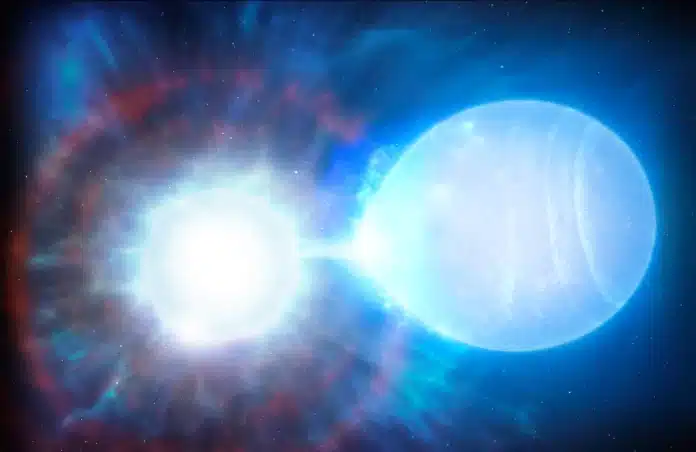
By Amit Malewar 4 Apr, 2025
Collected at: https://www.techexplorist.com/astronomers-spot-two-white-dwarfs-collision-course/98727/
Type 1a supernovae are powerful star explosions that help scientists measure distances in space. They happen when a white dwarf, the dense leftover core of a star, takes on too much material, becomes unstable, and explodes.
Scientists believe most of these supernovae occur when two white dwarfs are orbiting close to each other. The heavier one pulls material from the lighter one, eventually causing one or both stars to explode. This process gives us clues about how stars evolve and interact.
Astronomers at the University of Warwick have made an exciting discovery—a rare, high-mass compact binary star system located just 150 light-years away in the Milky Way. This marks the first time such a system has been observed, offering valuable insights into the origins of type 1a supernovae.
Astronomers have confirmed a pair of white dwarfs on a collision course to become a type 1a supernova—the brightest cosmic explosion. This system, the heaviest of its kind ever identified, has a combined mass of 1.56 times that of the sun.
Separated by only 1/60th of the Earth-sun distance, the stars currently orbit each other in just over 14 hours. However, gravitational wave radiation will gradually draw them closer over billions of years. On the verge of their explosive end, the stars will orbit so rapidly that a single orbit will take only 30–40 seconds.

This discovery suggests that such systems might be more prevalent than previously thought. The fact that researchers found this massive compact binary pair so close to Earth, within just 150 light-years, supports the idea that these systems may exist throughout the galaxy in greater numbers. If they were rare, it likely required searching much deeper into the galaxy to locate them.
Journal Reference
- Munday, J., Pakmor, R., Pelisoli, I., Jones, D., Sahu, S., Tremblay, P., Rajamuthukumar, A. S., Nelemans, G., Magee, M., Toonen, S., Bédard, A., & Cunningham, T. (2025). A super-Chandrasekhar mass type Ia supernova progenitor at 49 pc set to detonate in 23 Gyr. Nature Astronomy, 1-11. DOI: 10.1038/s41550-025-02528-4

Leave a Reply